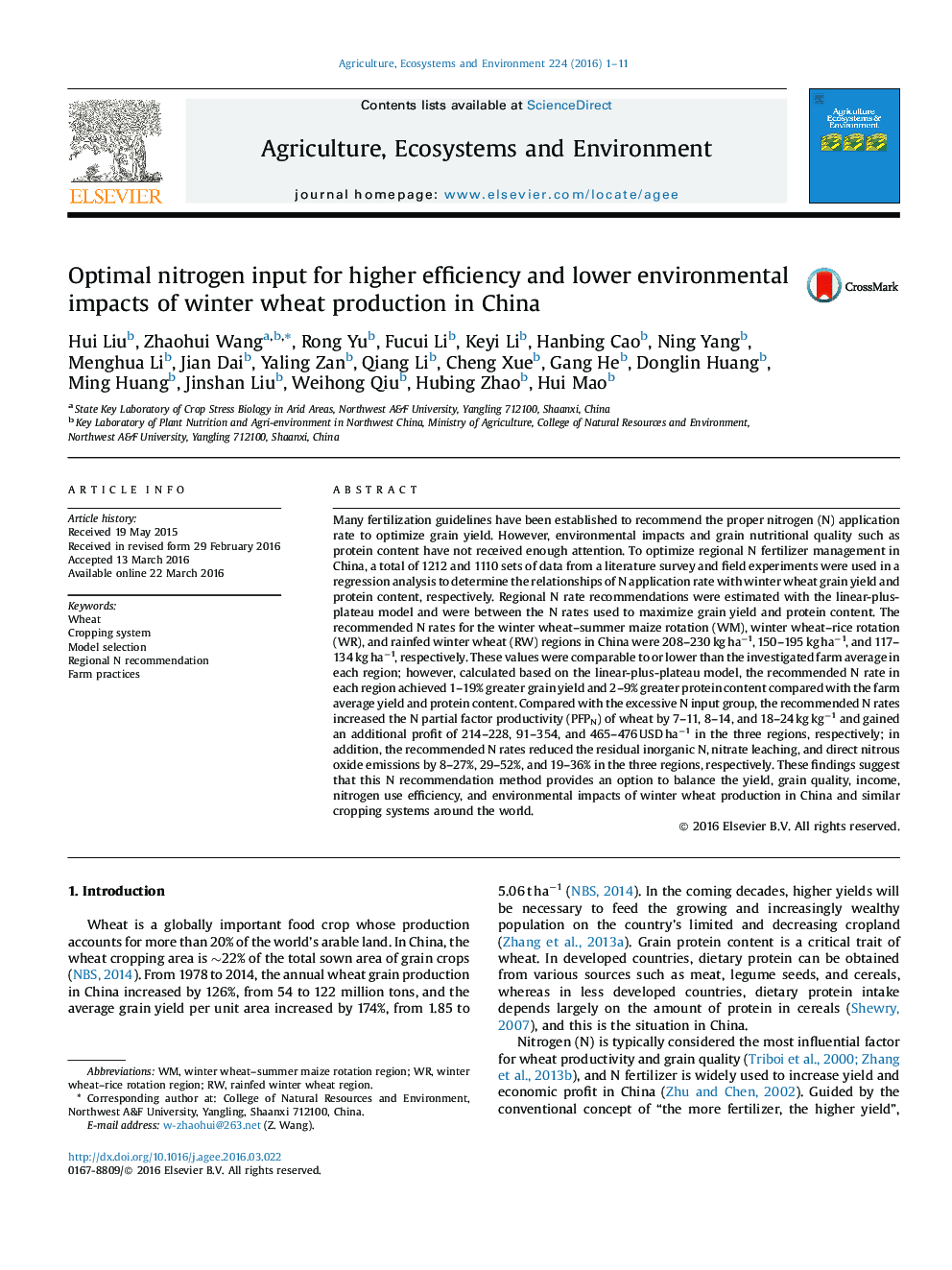| کد مقاله | کد نشریه | سال انتشار | مقاله انگلیسی | نسخه تمام متن |
|---|---|---|---|---|
| 2413532 | 1552028 | 2016 | 11 صفحه PDF | دانلود رایگان |
• Nitrogen rate is optimized for winter wheat by balancing grain yield and protein.
• Recommended N rates improve grain yield by 1–19% and protein by 2–9%.
• Recommended N rates increase N partial factor productivity by 7–24 kg kg−1.
• Recommended N rates reduce residual N, N leaching, and N2O emissions by 8–52%.
Many fertilization guidelines have been established to recommend the proper nitrogen (N) application rate to optimize grain yield. However, environmental impacts and grain nutritional quality such as protein content have not received enough attention. To optimize regional N fertilizer management in China, a total of 1212 and 1110 sets of data from a literature survey and field experiments were used in a regression analysis to determine the relationships of N application rate with winter wheat grain yield and protein content, respectively. Regional N rate recommendations were estimated with the linear-plus-plateau model and were between the N rates used to maximize grain yield and protein content. The recommended N rates for the winter wheat–summer maize rotation (WM), winter wheat–rice rotation (WR), and rainfed winter wheat (RW) regions in China were 208–230 kg ha−1, 150–195 kg ha−1, and 117–134 kg ha−1, respectively. These values were comparable to or lower than the investigated farm average in each region; however, calculated based on the linear-plus-plateau model, the recommended N rate in each region achieved 1–19% greater grain yield and 2–9% greater protein content compared with the farm average yield and protein content. Compared with the excessive N input group, the recommended N rates increased the N partial factor productivity (PFPN) of wheat by 7–11, 8–14, and 18–24 kg kg−1 and gained an additional profit of 214–228, 91–354, and 465–476 USD ha−1 in the three regions, respectively; in addition, the recommended N rates reduced the residual inorganic N, nitrate leaching, and direct nitrous oxide emissions by 8–27%, 29–52%, and 19–36% in the three regions, respectively. These findings suggest that this N recommendation method provides an option to balance the yield, grain quality, income, nitrogen use efficiency, and environmental impacts of winter wheat production in China and similar cropping systems around the world.
Journal: Agriculture, Ecosystems & Environment - Volume 224, 15 May 2016, Pages 1–11
